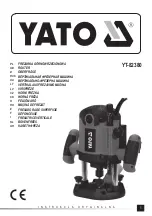
Transition Networks, Inc.
S4224 Web User Guide
33595 Rev. C
Page 634 of 669
c. Minor - Indicates that a non-service affecting condition has occurred and that corrective action should be
taken in order to prevent a more serious fault.
d. Warning - Indicates the detection of a potential or impending service affecting fault, before any significant
effects have been felt.
e. Indeterminate - The severity level cannot be determined.
f. Cleared - The clearing of one or more previously reported alarms.
Anycast address
In IPv6, an identifier for a set of interfaces (typically belonging to different nodes). A packet sent to an anycast
address is delivered to one of the interfaces identified by that address (the "nearest" one, according to the
routing protocol's measure of distance).
AES
AES is an acronym for
A
dvanced
E
ncryption
S
tandard. The encryption key protocol is applied in 802.1i
standard to improve WLAN security. It is an encryption standard by the U.S. government, which will replace
DES and 3DES. AES has a fixed block size of 128 bits and a key size of 128, 192, or 256 bits.
AP
Access Point, such as a wireless Access Point defined by IEEE 802.11.
APS
APS is an acronym for
A
utomatic
P
rotection
S
witching. This protocol is used to secure that switching is done
bidirectional in the two ends of a protection group, as defined in G.8031.
Aggregation
Using multiple ports in parallel to increase the link speed beyond the limits of a port and to increase the
redundancy for higher availability. (Also
Port
Aggregation
, Link Aggregation
).
Alarm Indication Signal (AIS)
ETH-AIS allows alarm suppression when defects are to be detected at the server layer. You can enable or
disable frames transmission with ETH-AIS information on an MEP or on a server MEP. You can also issue
frames with ETH-AIS information at the client maintenance level by a MEP, including a server MEP, on
detecting defect conditions. Defect conditions can include signal fail conditions with ETH-CC enabled, and AIS
condition with ETH-CC disabled.
Only a MEP or Server MEP is configured to issue frames with ETH-AIS information. When a MEP detects a
defect condition, it immediately starts transmitting periodic frames with ETH-AIS information at a configured
client maintenance level. The MEP continues to transmit periodic frames with ETH-AIS information until the
defect condition is resolved. On receiving a frame with ETH-AIS information, a MEP detects the AIS condition
and suppresses loss of continuity alarms with all of its peer MEPs. The MEP resumes loss of continuity alarm
generation on detecting loss of continuity conditions in place of the AIS condition.
Transmission of frames with ETH-AIS information can be enabled or disabled on a MEP (or on a server MEP).
Frames with ETH-AIS information can be issued at the client MEG level by a MEP, including a server MEP,
upon detecting defect conditions.















































